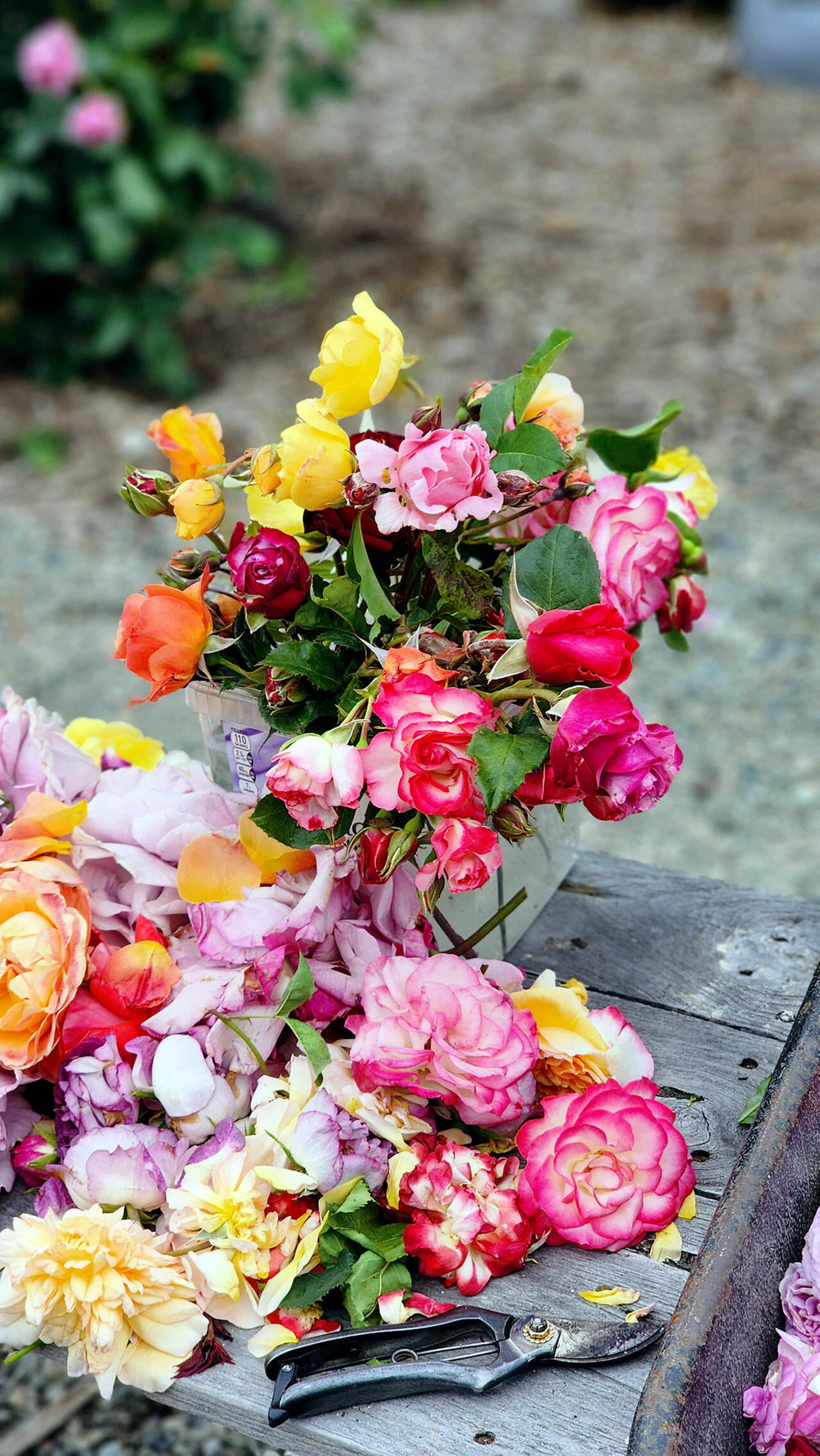THIS YEAR HAS been just spectacular for roses! My very first job in the greenhouse, at age 4, was tending the 3,200 blooming rose bushes.
Roses are a labor of love because they are laborious. Tend them all the time and make sure their soil is full of organic material, well weeded and cultivated.Next, and the most importantly, realize how the plant reacts to your cuts and know the proper time to prune.
Always prune just above (⅛ to ¼ inch) a node, branch, stem or leaf set. This is crucial to the plants physiology.
Cutting close to the node releases plant hormones that seal the cut and stimulate growth.
Leaving horns, which are cuts between the node that leave a stub, are far less stimulating and result in decaying plant tissue which, like gangrene, slowly works its way down the appendage and finally kills the host.
Realize the node you cut above will grow now more rapidly than it otherwise would have done. This is important in rose pruning.
It will also grow at the angle and direction it is pointed. By deciding where you to make the actual cut, you are really deciding where that plant will grow — and grow more rapidly.
That is the art of pruning.
A weekly job is removing dead wood, old canes, spindly growth and crossover branches. Now it is time to shape-prune them — definitely no hacking here.
In roses, it is all about the height of the cut and the resurrection of the eye (node).
You want to make sure the cut is just barely above a node, facing outward from the center of the plant.
We are trying to create an open plant that is well-lighted and open to air circulation to encourage good, strong, healthy flowers and stems.
So, here comes the list of rose types and their pruning styles.
Hybrid tea roses
These are the majority of people’s roses and are ideally cut 18 to 22 inches high, leaving 3 to 5 good canes.
Then continue to prune low as you harvest or deadhead at 24 to 36 inch.
Floribundas and grandifloras
These rose types are similar in style to hybrid teas. They are ever-blooming roses and tend to be more vigorous.
They are pruned slightly higher, about 24 inches above the ground. If you want well-form balanced plants with fewer but larger bloom clusters, prune now at 12 to 18 inches high.
Through the summer, keep harvested canes repruned at a 24 to 36 inch height.
Species, shrub and old world
These are quickly becoming new favorites in the garden. They can be short, tall, bushy or have wonderful spreading abilities. They bloom profusely throughout the year with little care.
Because they flower on short laterals (branches) that are produced each season on older wood, prune very slightly to shape and open up the thicket to light and air. Make sure to remove the crossover branches inundating the center.
Climbers
These vigorously growing plants do much better when filled with lush new wood, so cut them back to 3¼ to 4½ inches high.
If you are training it on a covered area, cut the side lateral off the main cane, leaving two or three nodes, yes, that is 80 percent of the plant.
Miniature roses
These are great novelty items and should be thinned and cut back to just four to six inches high, remove the debris being collected in their centers.
Tree and Patio roses
Absolutely get these neat items and never, never let the shoots grow below the graft along the canes.
On these plants, pruning to shape is the key. Now and throughout the season, cut out misdirected branches. Always thin spindly growth and select cut at shape-enhancing outward facing nodes.
When you are done with pruning your roses, clean away all disease harboring leaves and prunings.
Do not forget to fertilize the newly stimulated plants and mulch. It is the last key to protect roses.
And never, ever, hack away at your roses.
So please stay active on your roses and make sure to disbud your grandifloras if you want florist quality, long stem roses. This is done by simply removing all flower buds except the larger center terminal bud.
And above all … stay well!
________
Andrew May is a freelance writer and ornamental horticulturist who dreams of having Clallam and Jefferson counties nationally recognized as “Flower Peninsula USA.” Send him questions c/o Peninsula Daily News, P.O. Box 1330, Port Angeles, WA 98362, or email news@peninsuladailynews.com (subject line: Andrew May).

